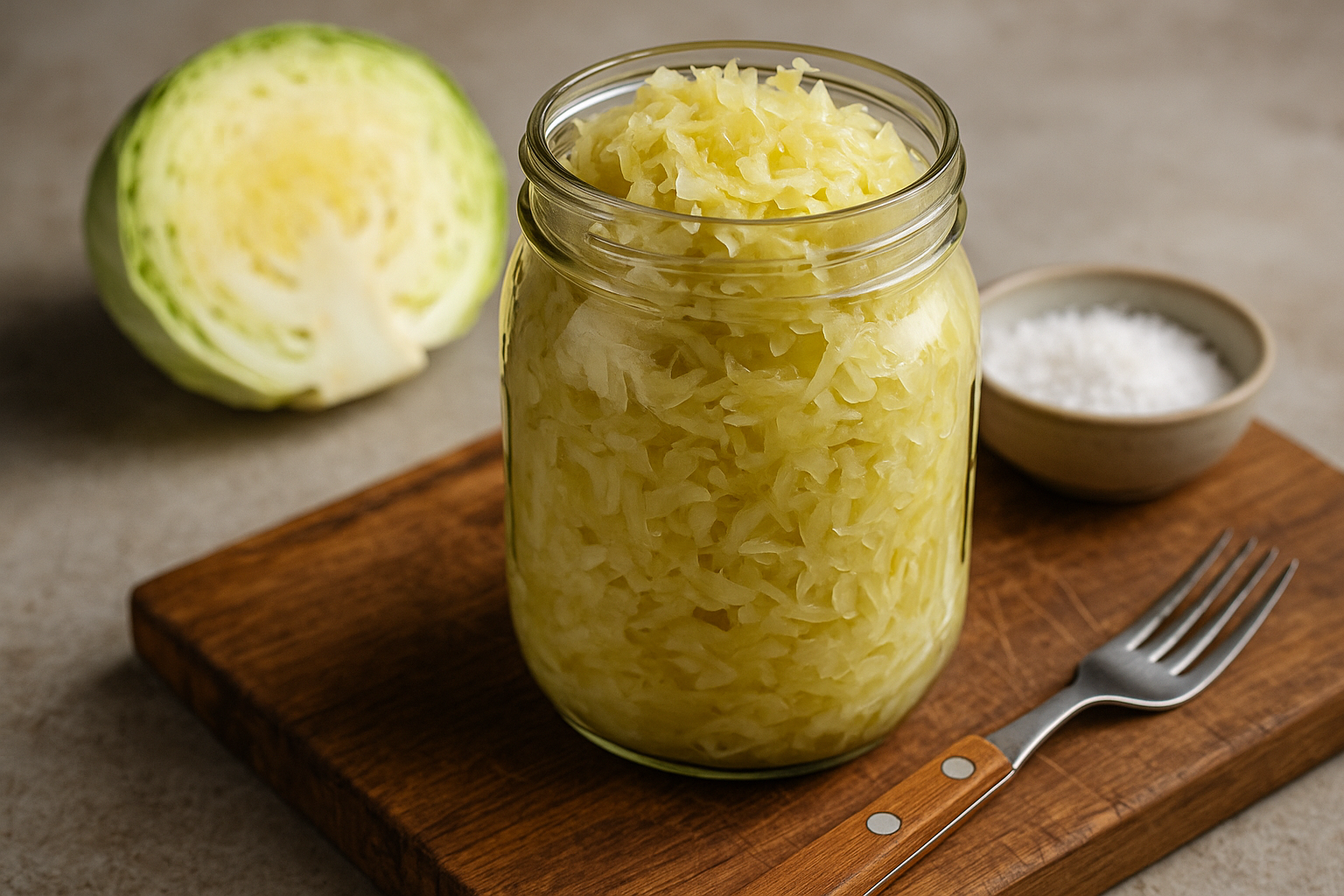Sauerkraut is one of those timeless ferments that never go out of style. It may seem simple—just cabbage and salt—but it’s actually a true nutritional, cultural, and culinary treasure. Let’s take a look at what it is, where it comes from, how it’s made, and how you can enjoy it in your kitchen.
What is sauerkraut?
Sauerkraut (from the German word meaning “sour cabbage”) is shredded cabbage fermented in brine using lactic acid bacteria. It contains no vinegar, sugar, or preservatives—just natural fermentation, full of probiotics and flavor.
It’s crunchy, tangy, and slightly salty, with a flavor that deepens over time. It’s also an excellent source of vitamins C and K, fiber, and gut-friendly microbes.
A bit of history
Though the name is German, sauerkraut likely has roots in Asia. Some theories trace it back to the Great Wall of China, where workers preserved cabbage in rice wine. The technique spread and evolved: in Central Europe, people began fermenting cabbage with just salt.
Today, sauerkraut is a staple in many cuisines: German, Polish, Alsatian, Austrian, and beyond. Similar versions exist around the world—like kimchi in Korea, kvashenaya kapusta in Russia, and pickled cabbage in parts of Latin America.
How is sauerkraut made?
The process is simple but magical:
- Finely shred cabbage.
- Add salt (about 2% of the cabbage’s weight) and massage until it releases juice.
- Pack it tightly into a jar so it stays submerged in its own brine.
- Cover loosely and let it ferment at room temperature for at least a week (2–4 weeks is even better).
That’s it! With time and patience, the microbes do their thing and transform the cabbage into a tangy, probiotic-rich delight.
Types of sauerkraut (yes, there are variations!)
Though classic sauerkraut is just cabbage and salt, you can totally get creative:
- With grated carrot: sweeter and more colorful.
- With apple: mild and fruity.
- With juniper and caraway: traditional German-style.
- With turmeric, garlic, or ginger: spiced and healing.
- With beetroot: vibrant fuchsia color and earthy flavor.
Each ingredient adds its own twist in both taste and nutrition.
How to eat sauerkraut
Sauerkraut is super versatile. Here are some tasty ideas:
- Raw as a side: with sausages, meats, burgers, or falafel.
- In salads: for crunch, acidity, and gut-friendly bacteria.
- In sandwiches or wraps: like pickles, but funkier.
- In hot dishes: soups, stews, or stir-fries (though cooking kills probiotics).
- With eggs, avocado, or toast: fermented breakfast, anyone?
Final tips
- Avoid metal utensils during fermentation.
- Bubbles, sour smell, and liquid rising? Good signs! It’s fermenting properly.
- Once you like the taste, store it in the fridge—it can last for months.
In summary…
Sauerkraut is much more than fermented cabbage: it’s tradition, health, and flavor in a jar. Easy to make at home, great for digestion, and a delicious way to upgrade any dish.
